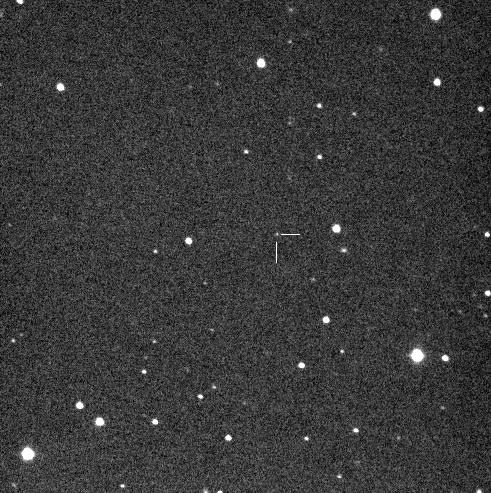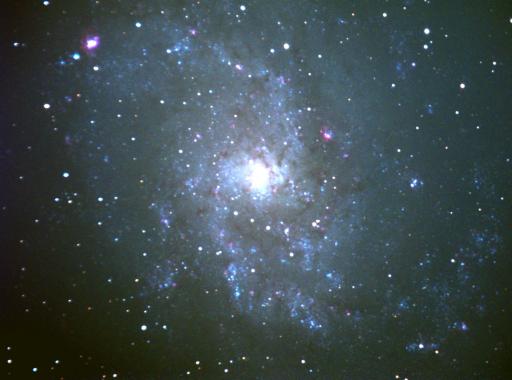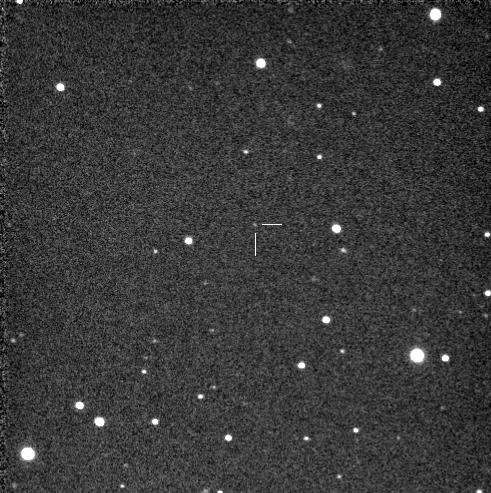
|
September 23/24,2005: Here are two images taken about a day apart of Asteroid 2005 UB313, the so-called 10th planet (although lots of controversy surrounds that claim). It was an amazing 95 astronomical units from the Sun when these images were taken and it is nearly 19th magnitude. The exposure times were about 5 minutes (7x45 seconds combined). |
| December 28, 2004: Here is a colour image of M33, the second nearest spiral galaxy, located in Triangulum. Click on the image to access the high-res version. It was taken using the new ST8XME camera, borrowed from the Burke-Gaffney Observatory, and also using an Optec 0.5X telecompressor lens. The exposure time was 30 minutes with a luminance (white) filter and 18 minutes in each of red, green, and blue filters. The image shows many of the star-forming HII regions in the galaxy. | |
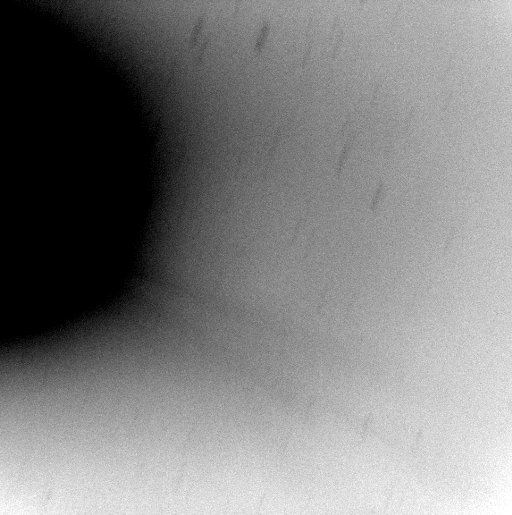 |
December 28, 2004: Here is a negative image of Comet C/2004 Q2 Machholz that shows its very faint forked tail which was not evident to visual observers that night. It consists of twenty 30-second images median-combined after centroiding each image on the comets nucleus. This image was taken with the BGO's ST8 camera focal reduced to f/5. |
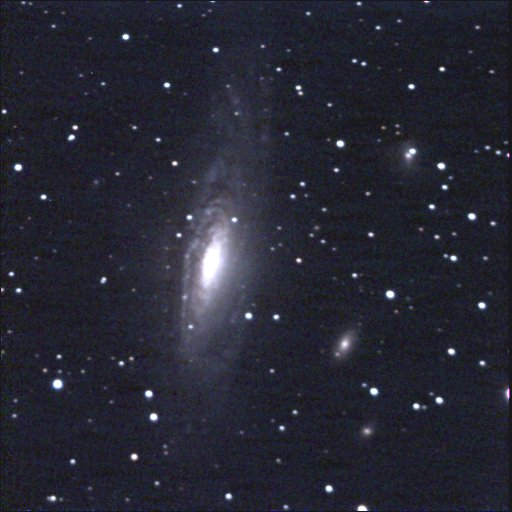 |
November 9, 2004: Here is a colour image of NGC7331 in Pegasus. Also visible are companion galaxies NGC7335, NGC7337, and a third galaxy that I couldn't find the number for. The combined exposure time was 33 minutes in RGB and L filters. Not a lot of colour is evident in the image - perhaps the fact that I forgot to turn on the cooler in the camera didn't help matters! |
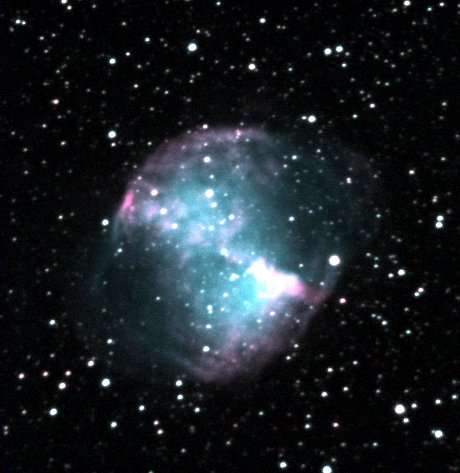 |
October 10, 2004: Earlier this week, I took this colour image of M27, the dumbbell nebula. The combined exposure time was about 40 minutes in RGB and L filters. |
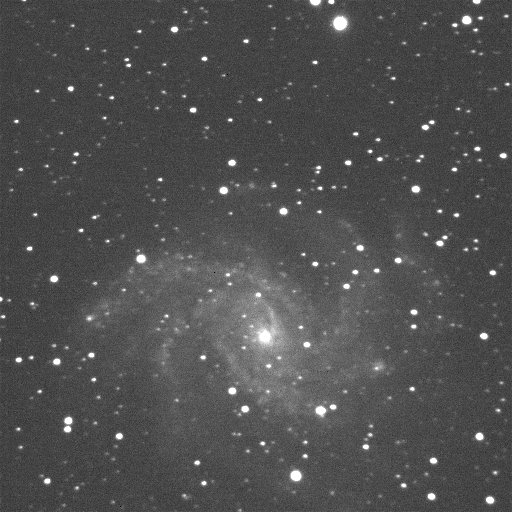 |
October 3, 2004: Another one that got away. This 45-second image of galaxy PGC65001 (a.k.a. NGC6946) taken on September 21st at 1:46 UT shows no supernova - a few days later on September 27th a supernova was discovered by Stefano Moretti and it stuck out like a sore thumb! Bad timing. See also the next image. |
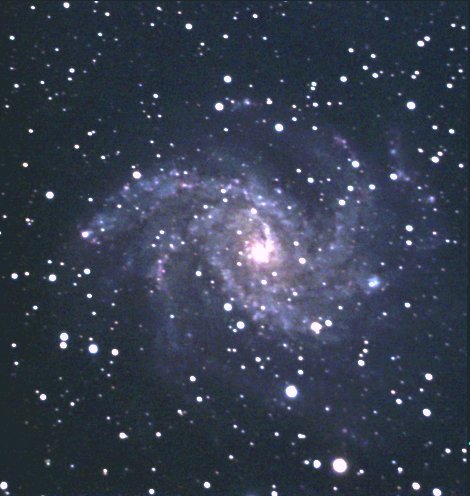 |
October 3, 2004: Since NGC6946 was such a pretty galaxy, even with only 45 seconds of exposure, I decided to try a colour image of it showing the supernova (taken on October 1st). Now I could point it out to you, but that would be too easy! It should be easy for you to spot. This image represents about 50 minutes of exposure time in R, G, B and Luminance filters. Its interesting to note that the left half of this galaxy is in Cygnus and the right half is in Cepheus! |
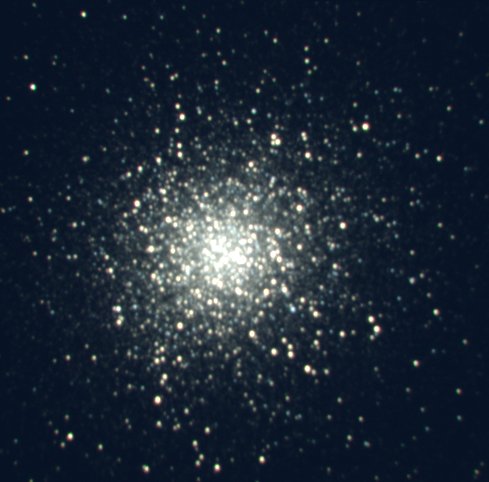 |
October 3, 2004: Here is a colour image of M13 - the famous globular cluster in Hercules. The combined (in R, G, B, and L filters) exposure time was about 40 minutes. |
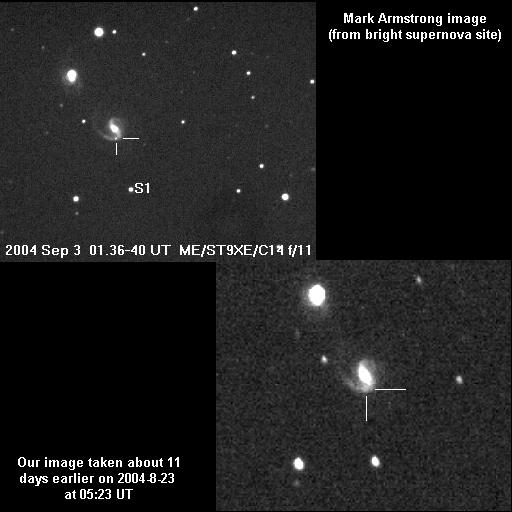 |
September 5, 2004: The one that got away! The past couple of weeks have been mainly occupied with supernova searching. Paul informed me last night that we missed one - SN2004ed in NGC6786. We imaged it on the night of August 22/23, about 11 days prior to its discovery on September 3rd by both Mark Armstrong and Tom Boles. |
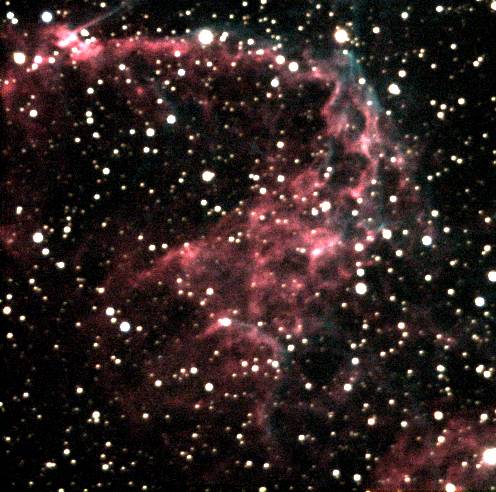 |
August 17, 2004: Tonight was an important night. It was first light for my new colour filter wheel *and* was also the first night for my new dome controller. The dome now follows the scope around the sky! This is an image of part of the Veil Nebula in Cygnus (NGC6995). Total exposure was about 22 minutes (in 45 second increments). |
 |
August 17, 2004: Another part of the Veil Nebula in Cygnus (NGC6992). Total exposure about 37 minutes (in 45 second increments). |
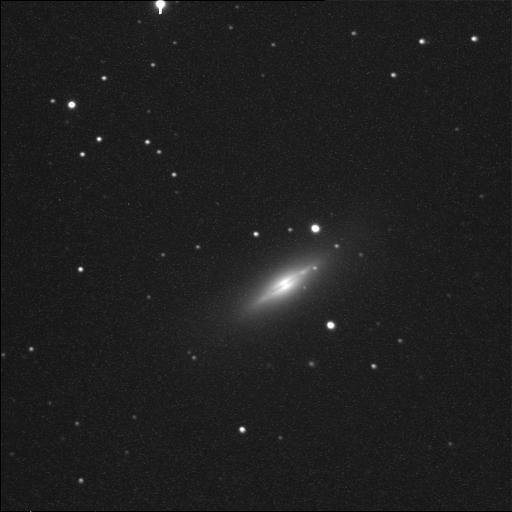 |
June 24, 2004: At left is M102 in Draco. It was a log-scaled 20 minute exposure (auto-guided). |
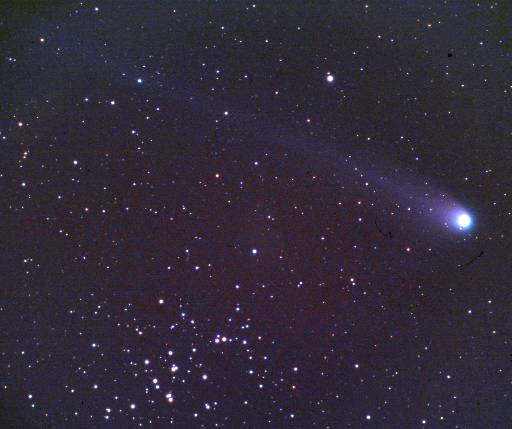 |
May 15, 2004: Today was a busy day. I drove from Sydney to Moncton to give a talk about building the observatory to the Moncton Centre of the RASC, then I drove home (about 9 hours of driving). The sky was clear (but somewhat hazy) so I could not pass up trying to photograph Comet Neat on film. This photo was taken with my 4" TeleVue Genesis refractor (hand guided with the C11). The exposure time is 4 minutes and FOV is about 3 degrees. The cluster in the image is the Beehive (M44). |
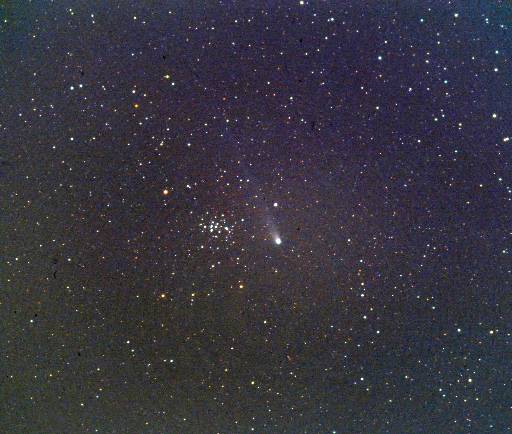 |
May 15, 2004: Another photo of Comet Neat. This photo was taken using a 100mm camera lens. The film used for both shots was Fujichrome Provia 400F. |
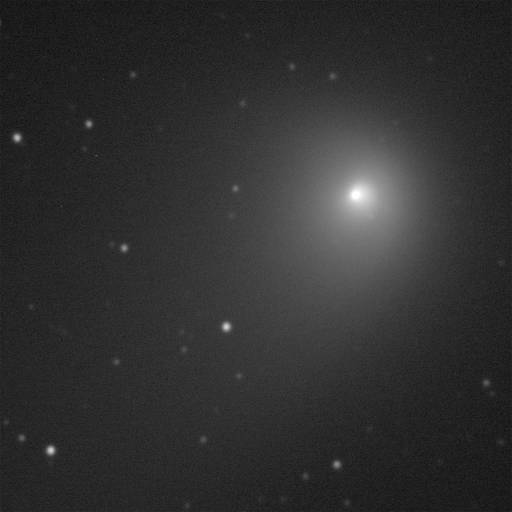 |
May 9, 2004: Tonight, before starting a supernova search group I comets C/2001 Q4 (Neat) - actually I took a series of 15 images 5 seconds long separated by 30 seconds. The image at left is one of the images "log" stretched to bring out the coma detail. |
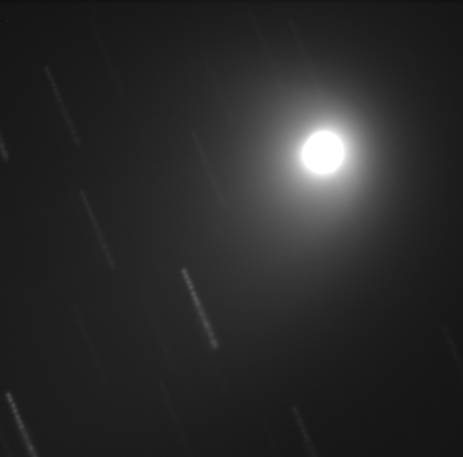 |
May 9, 2004: This is the sum of the 15 images of Comet Neat centering on the comet's nucleus. You can see how fast it moved in only about 8 minutes by the lenght of the trailed stars (this is a linear stretch). |
Last Updated: September 25, 2005.

